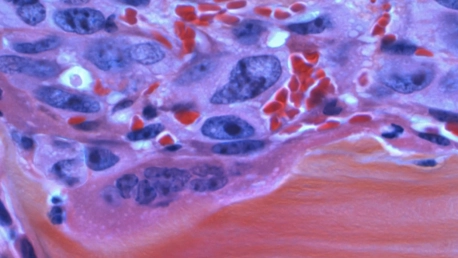Pancreatic cancer is a complex and aggressive disease that remains one of the deadliest forms of cancer. Its market, valued at approximately USD 1.6 billion in 2020 across the 7MM regions (the United States, the EU-4 [Italy, Spain, France, and Germany], the United Kingdom, and Japan), is poised for significant growth by 2034. This article will dive deep into the key drivers fueling this growth and the challenges that could impede progress. Understanding these dynamics is crucial for stakeholders aiming to navigate this evolving landscape.
Increasing Incidence of Pancreatic Cancer
One of the most significant factors propelling the growth of the pancreatic cancer market is the rising incidence of pancreatic cancer cases. In 2023, approximately 64,000 new cases were reported in the United States alone, with this number expected to climb in the coming years. Several factors contribute to this worrisome trend. Firstly, the aging population plays a pivotal role as the incidence rate of pancreatic cancer increases with age. As the global population ages, the number of older adults also rises, subsequently leading to a higher number of pancreatic cancer diagnoses.Improved screening methods have also contributed to the surge in pancreatic cancer cases. Advances in medical technologies have led to the development of more sophisticated diagnostic tools, enabling earlier and more precise detection of the disease. This paradoxically results in higher reported case numbers but is beneficial for treatment outcomes. The improved diagnostic tools ensure more individuals are diagnosed early, requiring medical intervention and driving market demand. As a result, the market for pancreatic cancer treatments expands, creating opportunities for healthcare providers and pharmaceutical companies to innovate and develop more effective therapies.
Advances in Diagnostic and Therapeutic Approaches
Another critical driver propelling the pancreatic cancer market is the ongoing advancements in both diagnostic and therapeutic approaches. A better understanding of the disease’s biological mechanisms has led to the development of more sophisticated diagnostic tools, such as advanced imaging techniques, biomarker identifications, and genetic profiling. These tools collectively contribute to more precise and earlier diagnosis, which is crucial for improving treatment outcomes and survival rates.On the therapeutic front, these advances have opened new avenues for treatment. Traditional modalities like surgery and chemotherapy are now being complemented by innovative therapies showing increased efficacy. The development of targeted therapies and immunotherapies represents a significant leap forward, offering patients more tailored and effective treatment options. These novel treatments have the potential to bring transformative changes to the pancreatic cancer landscape, driving market growth further. As the research community continues to focus on finding more effective treatments, the introduction of these advanced therapies will likely set new standards of care, offering hope for improved patient outcomes.
Current Treatment Modalities
The current standard of care for pancreatic cancer typically involves a combination of surgical interventions and chemotherapy. Surgical treatment remains the best option for localized or regional cases, often providing the best chance of long-term survival. However, pancreatic cancer is frequently diagnosed at advanced stages, limiting the feasibility of surgical intervention. In such cases, chemotherapy serves as the cornerstone of treatment across all stages of the disease.Several chemotherapies and targeted therapies are currently available, addressing specific genetic mutations and tumor characteristics. For example, LYNPARZA (olaparib) targets BRCA mutations, while KEYTRUDA (pembrolizumab) is indicated for patients with microsatellite instability-high expression in solid tumors. Recently, ONIVYDE (irinotecan liposome) received FDA approval for first-line treatment of metastatic pancreatic adenocarcinoma, offering a new option for patients with advanced disease. Despite these advancements, the efficacy and applicability of these treatments vary, necessitating ongoing research and development to improve patient outcomes and expand the range of effective treatment options.
Emerging Therapeutic Candidates
The pipeline for pancreatic cancer treatments is robust, with several promising candidates at various stages of clinical development. One such candidate is Pamrevlumab, an innovative antibody targeting connective tissue growth factor (CTGF) involved in chronic scarring and tissue overgrowth. Currently in Phase III trials, Pamrevlumab has shown promising results that could reshape the standard of care upon approval, potentially offering new hope for patients with pancreatic cancer.Another noteworthy candidate is SBP-101, a unique polyamine analog aimed at first-line metastatic pancreatic cancer. This therapy induces polyamine metabolic inhibition (PMI) and is currently in Phase III trials, with interim results expected by the first quarter of 2025. Alongside these candidates, other emerging therapies like OT-101, L-DOS47, and TTI-101 are highly anticipated and could offer new standards of care. These promising treatments are expected to drive market growth further, providing more effective and targeted treatment options for patients battling pancreatic cancer.
Epidemiological Insights
Understanding the epidemiology of pancreatic cancer is crucial for grasping market dynamics and developing effective treatment strategies. Epidemiological data segments the incidence of pancreatic cancer cases by age, stage, and molecular alterations, providing vital insights into patient demographics and disease trends. For example, the total incident cases, as well as incident cases by age and stage, aid healthcare providers in recognizing patterns and adjusting treatment strategies accordingly.Such epidemiological insights are essential for better resource allocation and treatment planning. They highlight the importance of early detection and targeted treatments, which are crucial for improving survival rates and quality of life for pancreatic cancer patients. By identifying significant patterns and trends, healthcare providers can focus on areas with substantial unmet needs, driving both research and market growth. This, in turn, helps to steer market focus towards the development of more effective and personalized treatment options, ultimately improving patient outcomes and advancing the pancreatic cancer treatment landscape.
Positive Trends and Future Prospects
The future of pancreatic cancer treatment appears promising, with combination chemotherapy remaining a critical component for advanced cases. Identifying targetable germline and somatic alterations, coupled with routine testing, has expanded treatment horizons, offering more personalized and effective treatment options. Moreover, multi-modal immunotherapeutic approaches, although still under clinical investigation, offer a promising safety profile and the potential to enhance treatment efficacy further.Emerging therapies are expected to substantially alter the treatment landscape, providing new standards of care and improved patient outcomes. These advancements, combined with better early diagnosis rates, set a solid foundation for future progress in the fight against pancreatic cancer. As research and development efforts continue to focus on finding more effective treatments, the introduction of these novel therapies will likely drive market growth and bring much-needed hope to patients and their families.
Challenges and Potential Impediments
Despite the positive outlook, several challenges may hinder market growth and the effective management of pancreatic cancer. One of the primary obstacles is the adverse side effects of current chemotherapy regimens, which can significantly impact patients’ quality of life. These side effects often limit the tolerability and effectiveness of treatment, necessitating the development of more targeted and less toxic therapies.Late-stage diagnosis due to inefficient screening methods presents another significant challenge. Pancreatic cancer is often diagnosed at advanced stages, limiting treatment options and negatively affecting prognoses. High mortality and low 5-year survival rates pose additional obstacles to drug development and efficacy analysis, making it difficult to demonstrate long-term benefits of new therapies. Economic burdens, including the high cost of treatments, impact patients’ overall well-being and quality of life. Additionally, issues related to pricing, market access, reimbursement, and healthcare specialist shortages could further impede market growth and the delivery of effective care to patients.
Conclusion
Pancreatic cancer is an aggressive and intricate disease, continuing to be one of the most lethal cancer types. In 2020, the market for pancreatic cancer treatment and management was valued at roughly USD 1.6 billion across the seven major markets (7MM): the United States, EU-4 (Italy, Spain, France, and Germany), the United Kingdom, and Japan. This market is expected to experience substantial growth by 2034.Key factors propelling this growth include advancements in medical technology, an increase in investment for research and development, and rising awareness about early diagnosis and treatment options. Innovations in drug development, personalized medicine, and immunotherapy are likely to drive market expansion. Moreover, improved diagnostic tools and screening programs can help detect pancreatic cancer at earlier, more treatable stages.However, several challenges may hinder this progress. The high cost of treatment and drugs, limited availability of healthcare infrastructure in certain regions, and the disease’s complex biology pose significant obstacles. Additionally, regulatory hurdles and the lengthy process of clinical trials might delay the availability of new therapies.Understanding these dynamics is crucial for stakeholders, including healthcare providers, pharmaceutical companies, and policymakers, as they navigate the evolving landscape of pancreatic cancer treatment. Comprehensive knowledge of both the growth drivers and challenges will enable informed decision-making and strategic planning to improve patient outcomes and market prospects.









